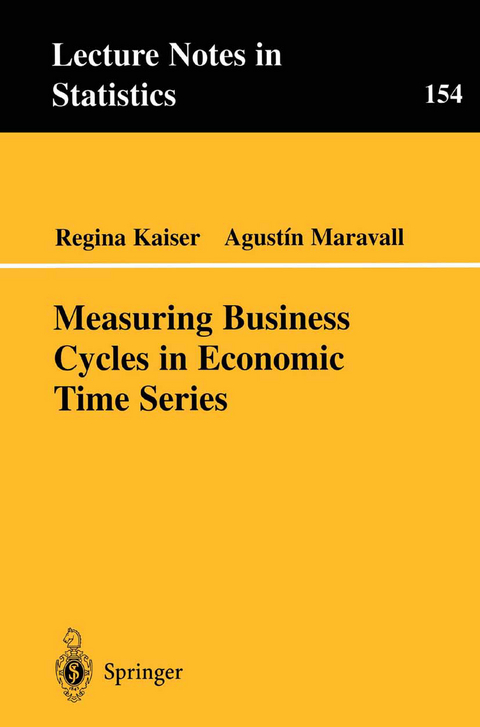
Measuring Business Cycles in Economic Time Series
Springer-Verlag New York Inc.
9780387951126 (ISBN)
1 Introduction and Brief Summary.- 2 A Brief Review of Applied Time Series Analysis.- 2.1 Some Basic Concepts.- 2.2 Stochastic Processes and Stationarity.- 2.3 Differencing.- 2.4 Linear Stationary Process, Wold Representation. and Auto-correlation Function.- 2.5 The Spectrum.- 2.6 Linear Filters and Their Squared Gain.- 3 ARIMA Models and Signal Extraction.- 3.1 ARIMA Models.- 3.2 Modeling Strategy, Diagnostics and Inference.- 3.3 Preadjustment.- 3.4 Unobserved Components and Signal Extraction.- 3.5 ARIMA-Model-Based Decomposition of a Time Series.- 3.6 Short-Term and Long-Term Trends.- 4 Detrending and the Hodrick-Prescott Filter.- 4.1 The Hodrick-Prescott Filter: Equivalent Representations.- 4.2 Basic Characteristics of the Hodrick-Prescott Filter.- 4.3 Some Criticisms and Discussion of the Hodrick-Prescott Filter.- 4.4 The Hodrick-Prescott Filter as a Wiener-Kolmogorov Filter.- 5 Some Basic Limitations of the Hodrick-Prescott Filter.- 5.1 Endpoint Estimation and Revisions.- 5.2 Spurious Results.- 5.3 Noisy Cyclical Signal.- 6 Improving the Hodrick-Prescott Filter.- 6.1 Reducing Revisions.- 6.2 Improving the Cyclical Signal.- 7 Hodrick-Prescott Filtering Within a Model-Based Approach.- 7.1 A Simple Model-Based Algorithm.- 7.2 A Complete Model-Based Method; Spuriousness Reconsidered.- 7.3 Some Comments on Model-Based Diagnostics and Inference.- 7.4 MMSE Estimation of the Cycle: A Paradox.- References.- Author Index.
| Reihe/Serie | Lecture Notes in Statistics ; 154 |
|---|---|
| Zusatzinfo | 1 Illustrations, color |
| Verlagsort | New York, NY |
| Sprache | englisch |
| Maße | 155 x 235 mm |
| Themenwelt | Mathematik / Informatik ► Mathematik ► Wahrscheinlichkeit / Kombinatorik |
| Wirtschaft ► Allgemeines / Lexika | |
| Wirtschaft ► Volkswirtschaftslehre ► Mikroökonomie | |
| Wirtschaft ► Volkswirtschaftslehre ► Ökonometrie | |
| ISBN-13 | 9780387951126 / 9780387951126 |
| Zustand | Neuware |
| Informationen gemäß Produktsicherheitsverordnung (GPSR) | |
| Haben Sie eine Frage zum Produkt? |
aus dem Bereich


